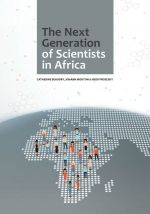The Next Generation of Scientists in Africa

It’s challenging, of course, to generalize scientists’ experiences across the entire African continent. Yet this book, based on a four-year study and over 250 interviews, draws out some commonalities among them, as well as some issues that are even more broadly applicable.
One finding, unsurprisingly, is that resource constraints severely affect African scientists. The two challenges identified as foremost by interviewees were insufficient funding and inadequate equipment. Apart from countries like Botswana, there is a lack of national-government funding. Therefore, African scientists depend on non-African funders like the European Union and the Wellcome Trust (in addition to the South African National Research Foundation).
For comfort in navigating these international funding relationships and accessing to resources that are limited in home countries, international mobility is key. Yet this isn’t an option for all researchers. Where scientists do benefit from experiences in other countries, this can lead to brain drain. “Arguably, the biggest cause of the decline of African science during the 1980s and 1990s was the devastating effects of the erosion of human capital through the brain drain” (page 7), according to the book. The effects of the brain drain plus civil war were especially severe on, for instance, the University of Makerere in Uganda.
A 39-year-old female interviewee from Nigeria described her experience of realising how much better-resourced Malaysian facilities were (page 82):
“when I went to Malaysia, I was able to view some state-of-the-art equipment which I had only read about in journals. When I went to Malaysia I was able to use them for part of my research. And that added some great discovery to my work. That’s why it has been accepted by reputable and journals of high regard. That added so much to part of my work…And most of the students who actually taught me how to do things, some of them were only master’s students and others were undergraduate students.”
This applies not just to laboratory equipment, but to more basic resources like library books as well. A 32-year-old Nigerian man also mentioned needing to buy data, out of his own pocket, rather than relying on institutional internet access.
International collaborations can have major difficulties, however. There are concerns about uneven or downright exploitative relationships between researchers in low- and high-income countries. A 35-year-old Zimbabwean man told the authors (page 113):
“My personal feeling is that we have a lot of people in Europe and US who are doing research on Africa. But if you look at their publications, they don’t include Africans…there’s not that mentorship. They should probably have taken one African to become the fourth author or some part of the team and then they will be learning through that process. So there’s that divide in terms of the quality of research, so there’s no proper mentoring and support for African researchers, because if you work with them, there’s the experience, they have the resources.”
Still, international mobility was very desirable across the different demographics of interviewees, and the young scientists in particular expressed frustration at limited international opportunities for them.
In general, being older is correlated with more opportunities, funding and publications. One takeaway is that mentorship is very important to the success of younger African scientists. In fact, the book’s research found that numbers of publications and citations had little effect on the likelihood of continuing with a scientific career. Networking and mentorship were far more important. Interviewees said that guidance in publishing with journals and developing softer skills, like networking, were very important. Yet they also pointed to the difficulty of pushing back against hierarchical structures and competition between scientists.
It’s positive that African scientists are publishing more than ever before. This is attributable to factors including specific initiatives, international collaboration and funding, and more African journals in the Web of Science databases. Yet it can be difficult for African journals to attain the profile of journals based in Europe and North America. And interviewees identified biases and blind spots on the part of journal editors, reviewers and collaborators who work on African issues without being based in Africa.
It will be important for Environment and Urbanization and others to keep these biases and blind spots in mind, while pushing for a scientific environment that supports African scientists and the funders and structures that contribute to their success.
Available for free from:
http://www.africanminds.co.za/wp-content/uploads/2018/10/AM-The-Next-Gen...
Further reading:
AOSTI (2014), The State of Scientific Production in the African Union, African Science, Technology and Innovation Outlook Bibliometric Series No 1, African Union, Sipopo, 84 pages, available at http://aosti.org/index.php/reports/133-the-state-of-scientific-productio....
Simon, David, Henrietta Palmer, Jan Riise, Warren Smit, Sandra Valencia (2018), “The challenges of transdisciplinary knowledge production: from unilocal to comparative research”, Environment and Urbanization Vol 30, No 2, pages 481–500, available at https://journals.sagepub.com/doi/full/10.1177/0956247818787177.
Book note prepared by Christine Ro
Search the Book notes database
Our Book notes database contains details and summaries of all the publications included in Book notes since 1993 - with details on how to obtain/download.
Use the search form above, or visit the Book notes landing page for more options and latest content.
For a searchable database for papers in Environment and Urbanization, go to http://eau.sagepub.com/

